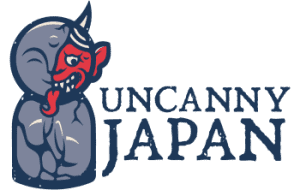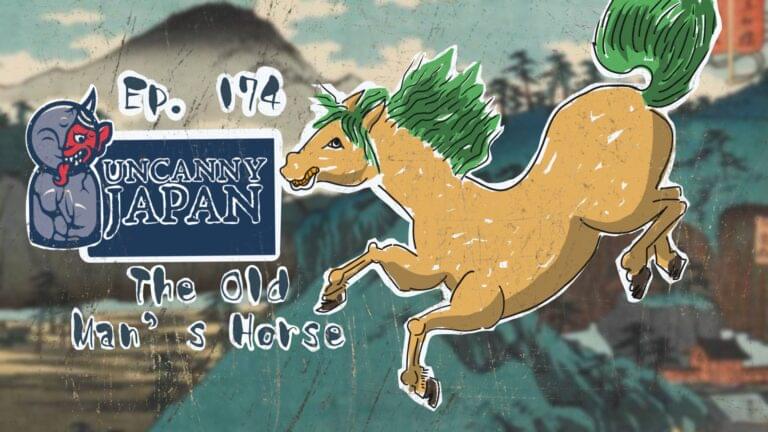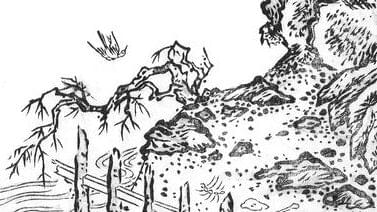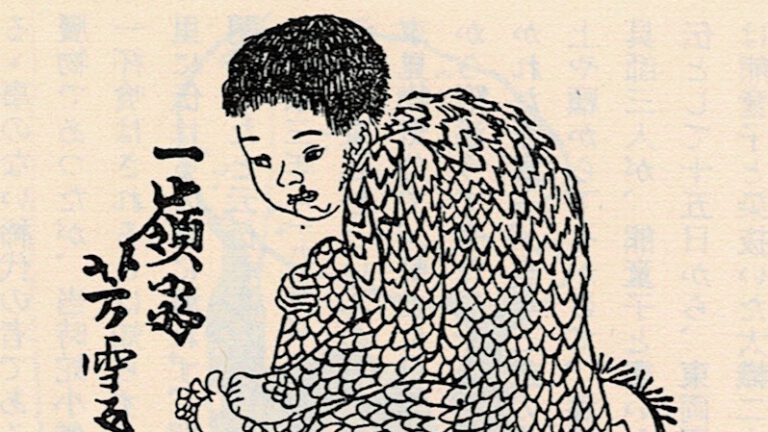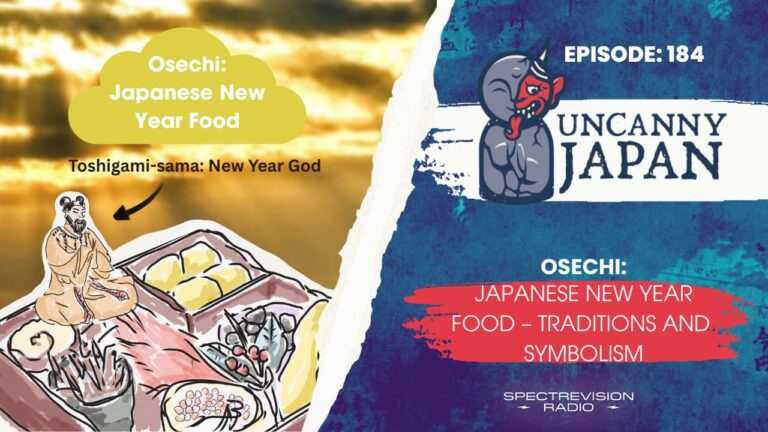Opening and Introduction
Hey, hey. My name is Thersa Matsuura, author of the Book of Japanese Folklore and podcaster here at Uncanny Japan, where I tell you about the more obscure nooks and crannies of Japanese culture.
Today I’m going to talk about one of my favorite topics, one of the things that makes Japan special to me, and I’m guessing special to you too. It still gets me excited after all these years, and that is food.
But not just any generic Japanese dish like sushi, tonkatsu, ramen, or yakitori. Let’s go a little deeper than that.
I absolutely love that wherever you go in Japan, there are some, and oftentimes many, local specialties. Ōsaka okonomiyaki, often translated as savory pancakes, and takoyaki, humorously, but not incorrectly, called octopus balls.
In Nagoya, you have your tebasaki, little chicken wings. In Okinawa, don’t forget to try gōyā chanpurū, a stir-fry with bitter melon, tofu, and pork. But there are also certain foods that are just prepared differently, depending on what prefecture, city, or area you’re in. And I’ll get into those too.
The Kanto vs Kansai Regional Rivalry
Let me start by telling you about a friendly little rivalry we have here on Honshū, the big island. That’s the Kantō versus Kansai. Kantō is eastern Japan, so think Tōkyō or Yokohama. It’s easy to remember too, Kantō, Tō, Tō, Tōkyō. And then there’s Kansai, which is western Japan. Think Ōsaka, Kobe, and Kyōto. So let me try another clever mnemonic device.
When you’re traveling, you “kan-sai” with relief when you’re back in Ōsaka and Kyōto, after all that hustle and bustle of Tōkyō. Did you know that the delineation line between Kantō and Kansai is usually agreed upon to be around Hakone? I live near there, kind of, and I can attest that we get a little culture and food from both sides, which is kind of fun.
Cultural Differences Beyond Food
Before food, it’s important to point out that the Kantō versus Kansai difference does extend well past all things culinary. Some quick generalities, not stereotypes, to keep in mind. The Kantō, Tōkyō-area people, are more fast-paced, reserved, and formal, and the Japanese spoken there has the standard pronunciation as well.
While in Kansai, Ōsaka-area, the people are more talkative, friendly, and have a really unique sense of humor. Dare I say goofy or rough around the edges? And I mean that in the best possible way. I hear that non-Japanese often feel a little more at home in the Kansai area. I know I do, and the accent is a hoot, too.
A real quick example would be “thank you” in regular Kantō Japanese is, as we all know, “arigatō gozaimasu.” In Ōsaka, you’ll get a feisty “ōkini.” Really? In Tōkyō is “hontō ni.” In Ōsaka, “honma.”
The Foundation: Water and Flavor Profiles
Okay, I can go on and on, but what I really want to talk about today is food. Of course, you’ll find exceptions when you visit, but in general, flavor-wise, Kantō has stronger, bolder flavors, where Kansai has lighter, more delicate flavors.
Miso Soup: The Perfect Example
Miso soup in Tōkyō is made with a katsuobushi, or smoked bonito flakes, base and uses red miso or mixed red and white miso. Ōsaka uses kelp for the base and white miso. I read the reason for this is because of all the minerals in the water in Kantō. You just can’t get a pleasant-tasting soup from boiling only seaweed there, so you have to use the smoked bonito fish.
When you order udon in Tōkyō, your soup will be this with a splash of soy sauce thrown in, making it richer and dark. In the Kansai area, however, they have softer water, which is actually ideal for making dashi with kombu seaweed. You get all those delicate flavors, and if soy sauce is used, they’ll go with a light-colored shōyu and maybe some mirin or sweetened sake, so a clear, less fishy soup.
Udon Varieties and Regional Names
Since we’re talking about udon, here’s something funny I just learned. Another difference is if you get your noodles with tenkasu, those crisp, crunchy little beads of deep-fried batter that have been scooped out of the tempura oil and sprinkled on top, it’s called tanuki udon in Kantō. Yes, raccoon dog udon.
In Ōsaka, though, some call it haikara udon. Haikara means something fancy. Haikara, high-class, stylish. But the name is born of total sarcasm, again displaying what a great sense of humor the Kansai people have. So why fancy high-class udon?
Well, before the Taishō era, Kansai-ites would just throw these little beads of tenkasu that invariably gather in your tempura frying oil away. Who needs those? Yuck. So when they saw everyone in Tōkyō were actually sprinkling them on top of their udon like they were something special, they jokingly said, “Oh, look at those Kantō people. They’re eating haikara or upscale udon.” Hence, haikara udon.
Tempura: Different Approaches to Frying
And speaking of tempura, that’s also made differently as well. Kantō uses an egg in the batter and deep-fries the fish or vegetables in sesame oil. It gives the tempura a lovely golden color. Kansai, on the other hand, doesn’t use egg at all and fries in salad oil, producing a much lighter color and flavor.
I don’t know if it’s true or not, but I’ve heard this repeated before. And that is that the reason for this is because back in the day in Tōkyō, they’d use fish caught in the Tōkyō Bay, which was and kind of is gross and dirty. So those fish had a certain smell to them. The sesame oil helped mask the stink. Or it might just be seafood in general. Because during the Edo era, popular tempura in, well, in Edo, was often shrimp, whitefish, and anago, eel. While over in Kansai, lots of vegetables and mushrooms were preferred.
Another difference is when eating tempura, Kantō will usually serve it with tentsuyu, that light dipping sauce. But in Kansai, you’ll find most likely salt, sometimes even flavored salt, like curry or green tea.
Noodle Preferences: Soba vs Udon
In general, Kansai loves its flour. You can find both soba noodles made from buckwheat flour and udon noodles made from flour flour restaurants all over Japan, of course. But there tend to be more specialty udon shops in the Kansai area and more specialty soba shops in Kantō. The udon texture is different as well. Kantō is softer and easier to chew. Kansai has a firmer bite to their noodles.
Okonomiyaki vs Monjayaki: The Great Pancake Divide
Now that we’re talking about flour, okonomiyaki. It’s been translated as everything from Japanese pizza to Japanese pancakes to Japanese soul food. It’s one of those “it is what it is” things, so let’s just call it okonomiyaki, which means kind of fried as you like it. Or as you like it fried.
Anyway, shredded cabbage, mixed into a batter of flour, egg, and dashi broth, with just about anything you want thrown in. And it’s all fried on a griddle. Meat, seafood, cheese, mochi. Hey, my mom used to put potatoes and carrots in hers, which gave my mother-in-law a heart attack. But in the immortal words of my mom, “You said it means as I like it.” And I couldn’t argue with that.
After fried up and flipped, you slather a zesty dark sauce all over the top of your okonomiyaki, maybe make a fancy design of mayonnaise too, sprinkle some dried seaweed flakes, and a heaping handful of smoked bonito katsuobushi flakes on top, and then dig in. Mmm, Ōsaka.
Now, let me tell you about the first time I had monjayaki, the Kantō equivalent. I was shocked. It starts off deceptively similar to okonomiyaki, but then it fools you. Long story short, the ingredients go on the griddle first, and you scoop them around, cooking them. Then pour the batter over that. But the batter never thickens up. It becomes a gooey, sticky concoction that you scrape off the grill and you play with it for a while, and then you eat it off of these tiny little metal spatulas.
It’s good when you know what’s coming, but I was sitting there with my kendō friends, watching them eat what I thought was raw batter, while I just tried desperately to get it to form a cohesive pancake-like consistency, wondering what I was doing wrong. Mmm, gooey, Tōkyō, monjayaki.
Shape Differences: Inari Sushi and Onigiri
Here are some more differences you might notice between Kantō and Kansai when you’re traveling around. Inari zushi, those sweet, salty, tangy, seasoned fried tofu pouches filled with vinegared sushi rice, the ones that foxes like so much. Did you know they are shaped differently depending on where you are? Kantō, Tōkyō, likes their little bales of hay kind of shape, and Kansai goes for triangles.
And just to confuse you, the shape of onigiri, rice balls, is the opposite. You’ll find more triangle ones in the Kantō area, and round or bale-shaped ones in Kansai. There’s a theory that the triangle shape was encouraged by Tokugawa Ieyasu. Remember him from the ancient walking roots episode? Well, he lived right here in Shizuoka, with a great view of Mount Fuji. And maybe, I’m just guessing here, one morning over a cup of green tea, while gazing out at the iconic mountain, he thought to himself, “Hmm, I should suggest people start making their rice balls to look like Mount Fuji.” Maybe not. Even Japanese people can’t decide if that’s true or not. But it sounds good.
Tamagoyaki: Sweet vs Savory
Then you have your tamagoyaki, which is a sort of Japanese omelette made by cooking thin layers of seasoned egg in a rectangular pan and rolling them into a log shape and then slicing. They’re soft, fluffy, a beautiful golden yellow, and they can be sweet or savory. And that’s where the difference comes in.
Kantō tamagoyaki are sweeter, with either sugar or that sweetened mirin added to the eggs. If you can taste the delicate notes and umami of seaweed and dashi in your rolled tamagoyaki, that would be Kansai. A Kansai-er might balk at the sweet tamagoyaki in their bentō, where a Kantō-ite would say, “Hey, it’s a palate cleanser. What’s the problem? Plus, my kids love them.”
Natto: The Fermented Bean Divide
If you don’t like nattō, that yummy, stinky, sticky, neba-neba fermented beans, then you just might be from Ōsaka. Kansai people aren’t as fond of this as the Kantō-ites.
The Unagi Story: Historical Cultural Significance
Let me end by telling you one of my favorite food differences between Kantō and Kansai. I learned this one while eating with my Japanese relatives long ago. Everyone, it seemed, was in the fishing industry in some form or fashion. I was newly married and I had a thing for unagi, grilled eel. Well, one evening, a bunch of us were sitting around and there were two uncles. Literally, one lived in Tōkyō, the other, Ōsaka. And we were having grilled unagi. They started talking about how to prepare the eel for grilling, and the cultural aspect just kind of blew my mind. I never forgot it.
When filleting the eel in Tōkyō, they cut along the back, sebiraki. This stems from back when samurai roamed the land, and cutting the belly resembled seppuku, cutting the stomach in ritual suicide, and it was very unlucky. So back-cutting, sebiraki, was and still is done there.
Ōsaka is the opposite. They do cut along the belly, harabiraki, and that’s because it’s a merchant culture. And there’s a popular phrase, “otagai ni hara o watte hanasō,” which means, “let’s both cut our bellies and talk honestly.” Here, cutting your belly means to talk openly and frankly. It’s a good thing. So, belly-cutting, harabiraki, it is.
Practical Travel Tip: Reading Cup Noodle Labels
Very lastly, before I let you go, let me teach you a little trick while you’re visiting or living in Japan. If you’re visiting a supermarket and you want to try some of the various cup noodles, look at the ingredients label and see if you can find an E or a W. E would stand for East, and that means you’re getting the Kantō flavor of the noodle. W would mean West, and that means you’re getting the Kansai type. You could get one of each and compare if you’d like.
Closing
Thank you so much for listening. Everyone stay safe and well, and I will talk to you again in two weeks. Bye-bye.
